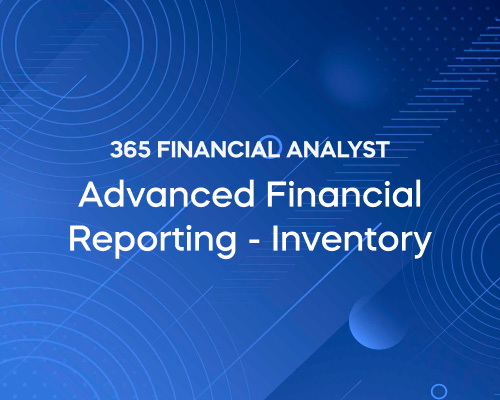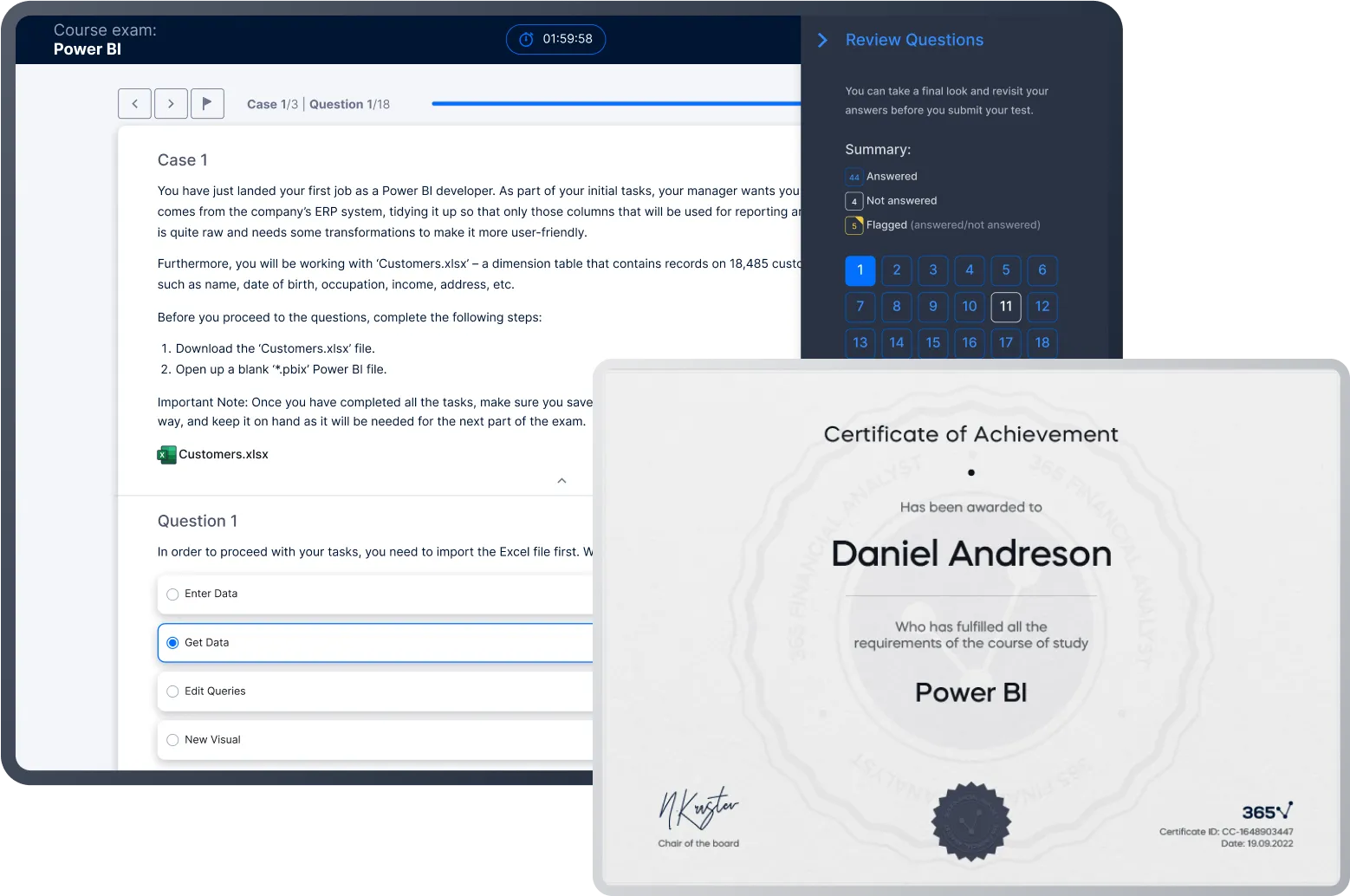Advanced Financial Reporting - Inventory
Master inventory reporting: Analyse the impact of costing methods like FIFO, LIFO, and WAVCO on financial statements
 Start for Free
Start for Free
What you get:
- 1 hour of content
- 16 Interactive exercises
- 5 Downloadable resources
- World-class instructor
- Closed captions
- Q&A support
- Future course updates
- Course exam
- Certificate of achievement
Advanced Financial Reporting - Inventory
 Start for Free
Start for Free
What you get:
- 1 hour of content
- 16 Interactive exercises
- 5 Downloadable resources
- World-class instructor
- Closed captions
- Q&A support
- Future course updates
- Course exam
- Certificate of achievement
$99.00
Lifetime access
 Start for Free
Start for Free
What you get:
- 1 hour of content
- 16 Interactive exercises
- 5 Downloadable resources
- World-class instructor
- Closed captions
- Q&A support
- Future course updates
- Course exam
- Certificate of achievement
What You Learn
- Gain a comprehensive understanding of inventory reporting practices and standards
- Understand how different inventory costing methods such as FIFO, LIFO, and WAVCO directly affect the Profit & Loss and Balance Sheet statements
- Master the calculation of inventory using the FIFO, LIFO, and WAVCO methods
- Learn to accurately convert financial statements from LIFO to FIFO
- Appreciate the critical role of inventory analysis and the subtle details that significantly impact financial reporting
- Improve your technical proficiency and career prospects by acquiring highly useful financial reporting skills
Top Choice of Leading Companies Worldwide
Industry leaders and professionals globally rely on this top-rated course to enhance their skills.
Course Description
Learn for Free

1.1 What does the course cover
2 min

2.1 Types of Inventory Costs
6 min

2.3 Inventory Valuation Methods (Part 1)
6 min

2.5 Inventory Valuation Methods (Part 2)
5 min

2.7 Inventory Valuation Methods (Part 3)
6 min

2.9 Inventory Valuation Methods (Part 4)
8 min
Curriculum
- 2. Inventory Valuation - Basic Concepts5 Lessons 31 MinIn this section, we examine the main types of inventory costs and the different cost flow assumptions (FIFO, LIFO, Weighted Average Cost, and Specific Identification). You will learn how to calculate and compare COGS, gross profit, and closing inventory balance under different inventory valuation methods. In addition, we discuss the impact of inflation and deflation on inventory indicators and ratios.Types of Inventory Costs6 minInventory Valuation Methods (Part 1)6 minInventory Valuation Methods (Part 2)5 minInventory Valuation Methods (Part 3)6 minInventory Valuation Methods (Part 4)8 min
- 3. Inventory Valuation - Practical Applications5 Lessons 26 MinIn the last lessons of this Advanced Financial Reporting – Inventory course, we focus on the practical applications of financial reporting. Wе demonstrate how to convert a company’s financial statements from a LIFO to a FIFO approach. We also cover the meaning of net realizable value (NRV) and its implications on inventory valuation. Last but not least, we show you how inventory disclosures look in companies’ financial statements.Converting the Financial Statements from LIFO to FIFO8 minConverting the Financial Statements from LIFO to FIFO (Exercise)5 minInventory Measurement5 minInventory Disclosures4 minThe Importance of Inventory Analysis4 min
Topics
Course Requirements
- Highly recommended to take the Accounting and Financial Statement Analysis and Fundamentals of Financial Reporting courses first
Who Should Take This Course?
Level of difficulty: Advanced
- Aspiring accountants, financial controllers, financial analysts, investment analysts
- Everyone who wants to work in finance
Exams and Certification
A 365 Financial Analyst Course Certificate is an excellent addition to your LinkedIn profile—demonstrating your expertise and willingness to go the extra mile to accomplish your goals.

Meet Your Instructor
Antoniya is a finance professional with vast experience in accounting, auditing, financial management, and multiple high-level finance roles. She holds two master’s degrees—in Finance and in Contemporary Educational Technologies. She has worked as an auditor at PwC, as a financial controller at Atos, as an FP&A Manager and Senior Manager at Coca-Cola, and currently, as a Finance Manager at 365. Her passion for finance and teaching brought her to the 365 Тeam. She has been tutoring on various topics, including accounting, financial reporting, financial planning and analysis, economics, etc. Antoniya’s qualifications and engaging teaching style make the learning process enjoyable, and her courses have helped numerous students progress in their careers.
What Our Learners Say
365 Financial Analyst Is Featured at
Our top-rated courses are trusted by business worldwide.
